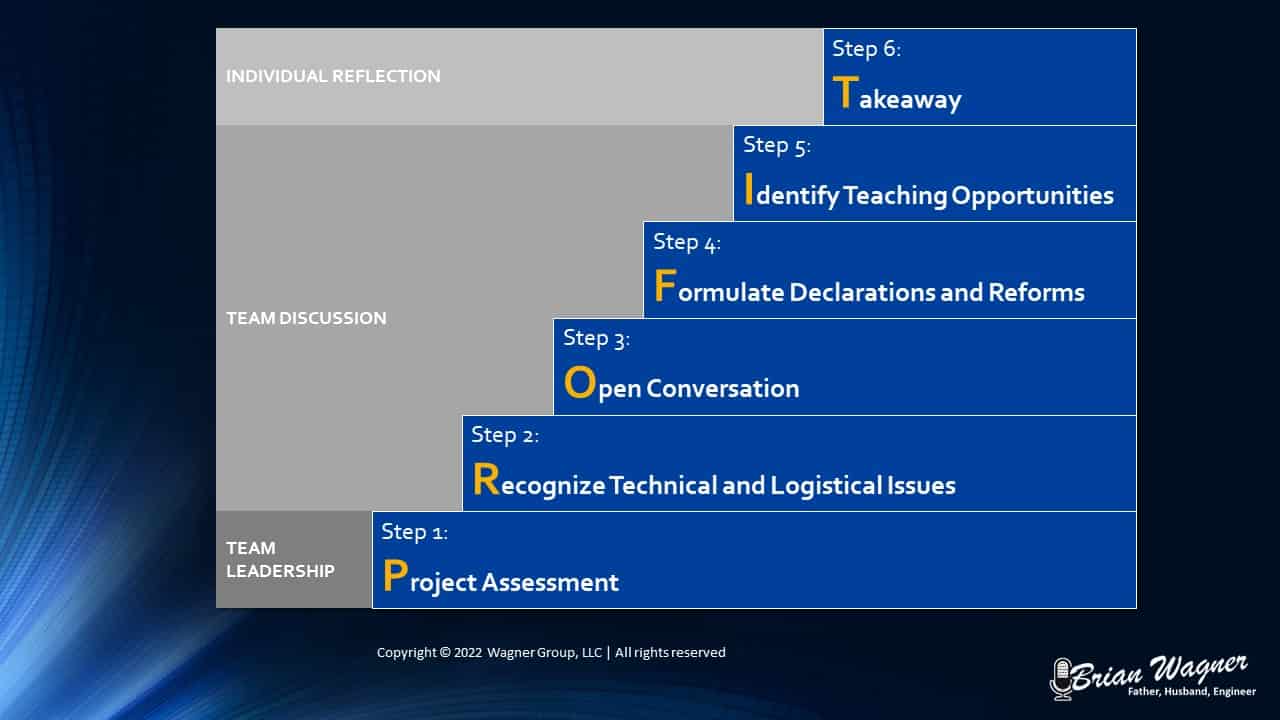In this episode of The Engineering Quality Control podcast, we continue with the 5-Part Framework for Quality Control and focus on the fifth and final aspect of this framework, which is known as TWEAK (debriefing).
Here Are Some Key Points Discussed in This Episode:
Review of the Past 4 Episodes:
- Gather is more than likely second nature for many experienced professionals. This phase emphasizes determining the expectations for the deliverables.
- Review is where the rubber meets the road and where we look at plans or the deliverable that we are working on. This step is where we ask questions, check for technical errors, and think about whether or not the solutions that are being provided are the best for those expectations.
- The Evaluate phase is a purposeful pause in the process to make sure you don’t stray too far away from those expectations and that you get those questions answered at the appropriate time by the appropriate people.
- The Action phase is when you make corrections, changes, and improvements, and develop and finish that best product or deliverable that we are all trying to get to.
Key Takeaways:
- The quality control and quality management process does not stop with the delivery of the deliverable.
- There is one more step that is critical to the long-term success of your team, known as tweak. While this step still takes into account the deliverable, it’s really about who created the deliverable. It is about making sure that your team is producing the best work and that you are investing in your team.
The Tweak (Debriefing) Process Can Be Broken Down Into a 6-Step Process Known as PROFIT:
1. Project Assessment
It starts with the project assessment of the team leadership. This is when the project manager, engineer, and/or architect come together and assess the project, gather information on the project, and ensure they have the final deliverables. They will look at and identify a few good things that have happened, and some of the things that might have not been so good. Then they will pull everyone together who worked on that deliverable and reflect on the project deliverable, both good and bad.
2. Recognize Technical and Logistical Issues
Write down all the logistical issues of things that didn’t go right, or things that were a struggle, e.g., software glitches, conflicts, or not understanding the expectations.
3. Open Conversation
Once the technical and logistical issues are out there, everyone should have the opportunity to speak in a safe and supportive environment. It is important to set some boundaries and create a scenario where it is not a blame game.
4. Formulate Declarations and Reforms
This is where you will talk about the things that went well, as well as identify where you need to improve. Were you under budget? Were you on time? What specifically about this job went well? What specifically about this job didn’t go well? Make a list of all of these things and document it so everybody can see it.
5. Identify Teaching Opportunities
This is not exclusive to that junior or new person on the job. As leaders, you have the opportunity to create and invest in the relationships of your staff. Identify who needs more support on your team and invest in teaching opportunities for them.
6. Takeaway
This last step is individual reflection. Try to purposefully acknowledge something you can take away from all of this.
More Details in This Episode…
About Brian Wagner, P.E.

Sources/References:
TEQC 2: Part 1 | Gather
TEQC 3: Part 2 | Review
TEQC 4: Part 3 | Evaluate
TEQC 5: Part 4 | Action
Brian Wagner Website
We would love to hear any questions you might have or stories you can share on the Tweak aspect of quality control for engineering professionals.













